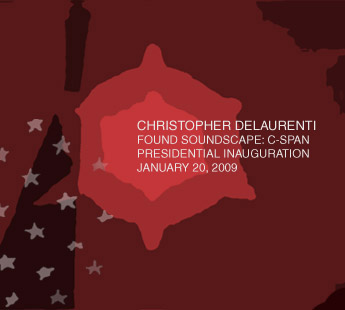Found soundscapes excavate field recordings inadvertently made in overlooked environments such as recording studios, broadcasts, and live performances.
Below the written pitches of Brian Ferneyhough’s Superscriptio for solo piccolo
Below the written pitches spectrally extracts sound beneath the written pitches of Brian Ferneyhough’s Superscriptio for solo piccolo to reveal recording anomalies, latent undertones, and mechanical noises.
of silences intemporally sung: Luigi Nono’s Fragmente-Stille, an Diotima

Unlike most of my music, this piece is meant to be heard only on compact disc. A limited edition album of this found soundscape was released by reductive music.
Read more about this unusual work:
Luigi Nono’s only string quartet still shocks: Fragmente-Stille, an Diotima unbraids time into anguished, eruptive passages and silence that startles, gasps, and freezes.
To shepherd performers towards the “many moments, thoughts, silences, ‘songs’ of other spaces” as indicated in the score, Nono filigreed the staves of Fragmente with several types of fermata (i.e. pauses, many of which are depicted in the above image) as well as passages by the poet Hölderlin; the performers must not recite anything aloud but should, according to the composer’s instructions, murmur (or think) the lines to themselves while performing.
Live, an audience seldom remains still. Bodies move, bodies breathe. So when the string quartet was recorded in 1983, the inaudible noise floor and then-unparalleled dynamic range of the compact disc charted an ideal aural geography for the crevasse-like pauses of Fragmente – intentionally unique silences which Nono hoped would vibrate into “silences ‘intemporally’ ‘sung.'”
Here, I have inverted Nono’s quartet by muting the audible passages played by the LaSalle Quartet and then elevating room tone, discreet ambiance, and other assumed silence high above the threshold of audibility.
You will hear on-the-fly tunings, annunciatory gasps, hurried breaths, sul ponticello bowings, and creaking chairs; these eruptions and outcries fuse with ambient sounds (a distant plane, moving equipment, and room tone) and artifacts of the recording process (especially digital glitches and dialed-in echo).
While listening, the stillness, the silence, is yours; together, I hope we find a singing, intemporal mirror of Nono’s desired “dreaming spaces” and “tranquil breaths” hidden within Fragmente-Stille, an Diotima.
C-SPAN Presidential Inauguration, January 20, 2009

I captured this found soundscape from C-SPAN immediately after the inauguration of Barack Obama as president of the United States of America on January 20, 2009.
Canny (and, alas anonymous) C-SPAN director(s) and camera ops captured shifting crowds, broadcast glitches, and supposedly “off-mike” comments, all of which mingle with the pageantry, power, and telling truncations (“I’m a lefty,” says Obama offhandedly) of the event.
Culled with no internal edits or processing, and/OAR released this free mp3 album with the cover (at left) designed by Dale Lloyd in the spring of 2009.
Open Carrier: Citywide One Manhattan
What is an open carrier?
Police parlance for a radio that has been inadvertently left on in talk or transmit mode, an “open carrier” stymies broadcast traffic, leaving so-called “dead air” to delineate sudden gaps, smudges of hiss, a hazy drone, beeping alerts, fragmented words, quick phrases, recessed conversations, and other unexpected artifacts.
When summed to mono, this stereo mix reveals a phase-dependent undertow of roiling pulses, an admittedly impoverished encoded concession to ears that seek more typical “electro-acoustic” music.
The first in my series of found soundscapes, “Open Carrier:…” originally appeared in the February 2005 release of Addenda on the netlabel Seasonal.



